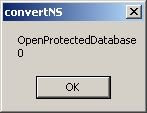Background: In a Windows environment, a "binder" is represented by a single directory (or folder) on an employee's workstation and on the server. The directory has a unique ID called a GUID. That directory houses all the workpaper files shown to the user through the Binder View within Pfx Engagement. This setup poses stumbling blocks for system (those maintaining the hardward) and application (those administrating the Pfx Engagement) administrators when trying to manage the binders' size on the server hard disk.
- 1. GUID: This is an unique identifier used to keep track of the binders in an efficient and effective way which is standard industry practice. While this is great for computers, humans can't easily make heads or tails of it. It will have to translated into something recognizable to humans so that it can be associated with a specific binder in the views within Pfx Engagement.
- 2. File Size: This is not as easy as saying, "How big is my Word document?" Since a binder is actually a directory on the hard disk, what is actually being asked is "How much space is being used by this directory?" or "How big is this collection of documents?". Directory size is not displayed by default in Windows Explorer making it difficult to view manually (third party applications are available to add this to Windows Explorer).
- 3. Information Accessibility: This is something that may need to be monitored more frequently than annually. As such, creating a list of binders over a certain size should be easier than manually typing the list (basically, running a report).
Once both applications are installed, peform the following steps to identify binder sizes:
- 1. Open a Command Prompt (Start Run Type "command" or "cmd")
- 2. Type the following:
diruse /* /m /, "\\[Pfx engagement server name]\Admin\workpapers\[Central File Room name]" > "[path]\[desired file name].txt"
For example:
diruse /* /m /, "\\engagement\Admin\workpapers\Main Office" > "C:\Engagement Reports\BinderSizes-20081227.txt" - 3. Start ReportBuilder (found in C:\Pfx Engagement\WM\Utilities\Report Builder)
- 4. Enter the name of the server and press OK
- 5. Select "Client/Binders List" from Report on the menu bar
- 6. Press "Export to Excel"
- 7. Move (cut / insert) the "bid" column to Column A and sort in ascending order
- 8. Save the Excel file in the appropriate location
- 9. Go to the tab named "Sheet 1"
- 10. Import the data in the .txt file created in step 2
- 11. Add the column headings ClientID, Client Name, and Binder Name
- 12. Add a VLOOKUP for each of the added columns, pulling the date from the "Client Binder List" tab (you may want to remove the VLOOKUP formulas based on how you're going to use the data)

